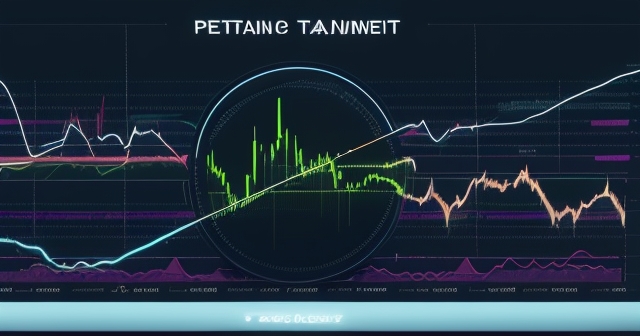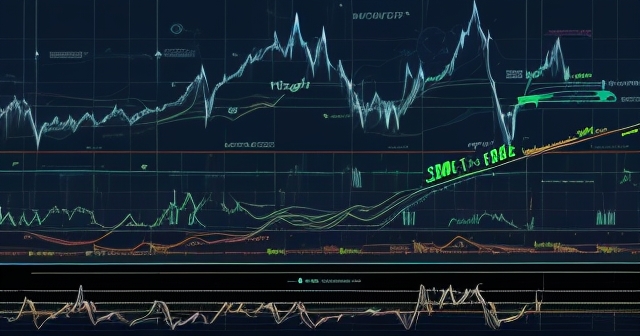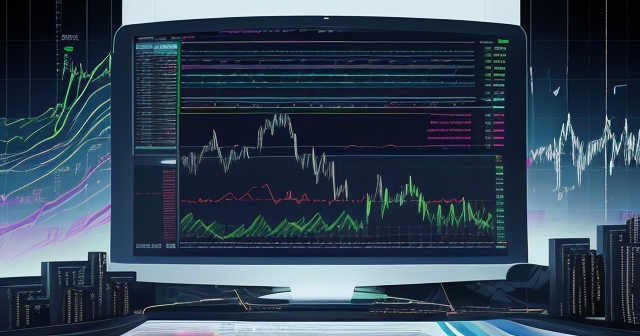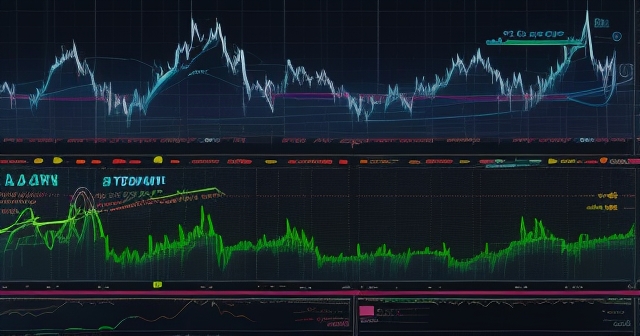Decoding Perpetual Futures: A Deep Dive into the Contract Without Expiry
Imagine being able to speculate on the price movement of an asset – be it a cryptocurrency, commodity, or index – without ever having to own it, and without facing a looming expiration date that forces you to close your position. Sounds intriguing, right? This is the essence of perpetual futures, or perpetual contracts, a fascinating and powerful type of derivative contract that has revolutionized trading for many, particularly within the dynamic world of cryptocurrency.
For those of us embarking on or deepening our investment journey, understanding these instruments is becoming increasingly crucial. They offer flexibility and leverage, but they also come with unique mechanics and risks that demand careful consideration. We’re here to guide you through the complexities, helping you grasp the core concepts like a seasoned trader, while maintaining the clarity a beginner needs.
In this comprehensive exploration, we’ll demystify perpetual futures, break down their operational mechanics, discuss their significant role in modern markets, and shine a light on the risks and regulatory considerations that shape their landscape. By the end, you should have a solid foundation to approach these contracts with informed caution and strategic intent.

The Core Concept: What Exactly is a Perpetual Contract?
At its heart, a perpetual contract is a derivative contract. This means its value is derived from the price of an underlying asset. However, unlike traditional futures contracts that have a fixed expiration date by which the contract must be settled (either by physical delivery or cash), perpetual contracts, as their name suggests, have no expiration date.
- This key characteristic allows traders to hold a position – long (betting on price increase) or short (betting on price decrease) – indefinitely, as long as they meet the necessary margin requirements.
- Think of it like trading spot assets, where you can hold for as long as you like, but with the added features typically associated with futures, such as leverage and short-selling capabilities without needing to borrow the underlying asset directly.
- The primary function of a perpetual contract is to allow market participants to speculate on the future price movement of an asset.
You are trading a contract representing the asset, not the asset itself. This cash-settled nature removes the logistical complexities of physical delivery often associated with traditional futures, making them highly accessible and liquid.

The Ingenious Mechanism: Understanding the Funding Rate
If perpetual contracts never expire and don’t involve physical settlement, how do their prices stay anchored to the price of the underlying asset in the spot market? This is where the ingenious funding rate mechanism comes into play. It’s arguably the most crucial, and often misunderstood, aspect of perpetual futures trading.
The funding rate is a small fee exchanged between traders holding long and short positions at regular intervals (commonly every 8 hours, though this varies by exchange). Its purpose is to keep the contract price trading close to the spot price of the underlying asset.
| Market Condition | Funding Rate | Payer |
|---|---|---|
| Perpetual price > Spot price | Positive | Long position holders |
| Perpetual price < Spot price | Negative | Short position holders |
This continuous exchange helps prevent large, persistent divergences between the perpetual contract price and the underlying spot price, a phenomenon that would be naturally corrected by expiration and settlement in traditional futures markets.
Let’s put it simply: the funding rate is like a regular ‘interest’ payment based on the difference between the perpetual and spot prices. If the perpetual is more expensive (contango), longs pay shorts. If the perpetual is cheaper (backwardation), shorts pay longs. It’s a dynamic system designed to keep the two markets tethered.

Amplifying Potential (and Risk): Leverage in Perpetual Trading
One of the most attractive, yet potentially dangerous, features of perpetual contracts is the ability to trade with significant leverage. Leverage allows you to control a large position size with a relatively small amount of capital, known as margin.
For example, if an exchange offers 10x leverage, you can control a $10,000 position in an asset by putting up only $1,000 of your own capital as margin. This means that a small price movement in your favor can lead to a substantial percentage gain on your initial margin. If the asset price increases by just 1% (a $100 gain on the $10,000 position), your $1,000 margin has increased by 10%, potentially turning $1,000 into $1,100 (before fees and funding).
-
Leverage benefits: Amplified gains on successful trades can significantly enhance overall returns.
-
Leverage risks: Losses can also be magnified, leading to rapid depletion of the margin if the market moves against your position.
-
Understanding leverage: Critical for managing risks effectively and ensuring that you can sustain potential adverse moves in the market.

The Safety Net and the Cliff: Margin Requirements and Liquidation
Trading with leverage necessitates the concept of margin. When you open a leveraged position, you’re required to put up an initial amount of capital, the initial margin, as collateral. This acts as a good-faith deposit and determines the maximum leverage you can use.
Once the position is open, the exchange continuously monitors its value against a minimum required margin level, known as the maintenance margin. This is the minimum amount of equity required in your account to keep the position open. As the market price moves against your position, your account equity (value of your margin plus/minus P&L) decreases. If your equity falls below the maintenance margin level, your position becomes subject to liquidation.
| Margin Type | Description | Implications |
|---|---|---|
| Initial Margin | Collateral required to open a position | Determines maximum leverage |
| Maintenance Margin | Minimum equity required to keep the position open | Position is subject to liquidation if breached |
Liquidation is the automatic forced closure of your leveraged position by the exchange. It happens rapidly to prevent your account balance from falling below zero and incurring debt. When liquidation occurs, you lose the margin associated with that position, and sometimes more in volatile markets if the liquidation engine cannot close the position at the precise liquidation price.
Exchanges typically use the Mark Price (a calculated price based on spot prices and funding rates) rather than the Last Price (the last traded price on the perpetual contract) for calculating margin and triggering liquidation. This helps prevent manipulation by large orders placed solely to trigger liquidations at artificial prices.
Understanding your liquidation price, the relationship between Mark Price and Last Price, and setting appropriate stop-loss orders well before your liquidation price are critical risk management steps when trading perpetual contracts. Liquidation is the ‘cliff’ edge of leveraged trading.

Why Perpetuals Thrive: Dominance in Cryptocurrency Markets
While perpetual futures exist for other asset classes, their proliferation and dominance have been most evident in the cryptocurrency market. Why is this the case?
The cryptocurrency market operates 24/7, globally. Traditional futures, often tied to exchange operating hours and specific expiry cycles, don’t fit this continuous nature as seamlessly. Perpetual contracts, with their non-expiring structure and 24/7 trading availability, are perfectly suited for this always-on environment.
- Cryptocurrency markets are also known for their high volatility. This volatility creates frequent and significant price swings, which can be particularly attractive to speculative traders using leverage.
- Perpetual contracts provide an efficient and widely accessible tool for capitalizing on these movements, whether betting on upward or downward trends.
- The relative nascency of regulated spot lending/borrowing markets for shorting specific cryptocurrencies outside of exchanges makes perpetual contracts a straightforward way to gain short exposure.
Their ease of access compared to setting up traditional futures accounts has also contributed to their popularity among a broad base of retail and institutional crypto traders.
Strategic Applications: Trading Strategies and Use Cases
Perpetual contracts are versatile instruments used for a variety of trading and investment strategies:
-
Speculation: This is perhaps the most common use. Traders use perpetuals to bet on the anticipated price direction of an asset, employing technical analysis, fundamental analysis, or a combination of both to inform their decisions. Leverage amplifies the potential returns from successful speculative calls.
-
Hedging: Perpetual contracts can be used to hedge risk in a spot portfolio. If you hold a significant amount of a cryptocurrency, you could open a short perpetual position on the same asset. If the spot price falls, the gains on your short perpetual position can offset the losses in your spot holdings.
-
Arbitrage: Opportunities can arise from differences between the perpetual contract price and the spot price, or between perpetual prices on different exchanges. Traders can attempt to profit from these discrepancies by simultaneously buying the cheaper and selling the more expensive instrument, capturing the price difference as it converges (often driven by the funding rate). However, this requires sophistication and fast execution.
-
Trend Following: The flexibility and leverage offered by perpetuals make them suitable for strategies focused on identifying and riding market trends, allowing traders to take significant directional bets.
The 24/7 nature and high liquidity on major platforms offering perpetuals enable these strategies to be implemented around the clock, reacting quickly to global market events.
| Trading Strategy | Description |
|---|---|
| Speculation | Bet on price movements using analysis. |
| Hedging | Offset losses in a spot portfolio. |
| Arbitrage | Profit from price discrepancies across markets. |
| Trend Following | Ride market trends with significant bets. |
Advantages of Trading Perpetual Contracts
Why do so many traders gravitate towards perpetual contracts? They offer several compelling advantages:
-
No Expiration Date: The ability to hold a position indefinitely provides immense flexibility. You don’t face the pressure of a looming settlement date and can manage your trades purely based on market conditions and your strategy.
-
High Liquidity: Due to their popularity, especially in crypto, major perpetual markets often boast very high trading volumes and tight bid-ask spreads, allowing for efficient entry and exit of positions.
-
Ease of Shorting: Opening a short position is as simple as opening a long position, providing easy access to capitalize on falling markets without the complexities of borrowing assets.
-
24/7 Access: Trading on platforms that offer perpetuals is typically available around the clock, aligning with the nature of underlying assets like cryptocurrencies and global macroeconomic events.
-
Capital Efficiency (via Leverage): While risky, leverage allows traders with limited capital to access larger position sizes, potentially increasing return on investment (ROI) significantly if trades are successful.
These advantages, particularly the combination of no expiry and leverage, create a powerful tool for traders seeking flexibility and amplified exposure to market movements.

Navigating the Perilous Waters: Key Risks of Perpetual Trading
With great power comes great responsibility, and the advantages of perpetual contracts are inextricably linked to significant risks that you must fully understand and respect:
-
Amplified Losses due to Leverage: This is the most prominent risk. Leverage magnifies gains, but it mirrors that effect on losses. A small adverse price movement can wipe out a substantial portion, or even all, of your margin quickly.
-
Liquidation Risk: Closely tied to leverage, the risk of being automatically liquidated is ever-present if the market moves against your position and your margin falls below the maintenance level. Liquidation can happen fast, often leaving you with little or no remaining capital for that position.
-
Funding Rate Costs: While funding rates can sometimes be a source of income, they can also be a significant cost, especially when holding a position against a strong market trend that is driving a persistent positive or negative funding rate. These costs can accumulate over time and erode profits or deepen losses.
-
Market Volatility: Particularly in cryptocurrency markets, rapid and unpredictable price swings (volatility) can dramatically increase the risk of liquidation, even with what might seem like conservative leverage.
-
Exchange-Specific Risks: Trading on any platform carries risks related to the exchange’s solvency, security breaches, platform outages during critical market periods, or system overload causing execution issues. These are heightened when trading leveraged positions where timing is paramount.
Dealing with such risks necessitates choosing a reliable platform. If you are looking for a regulated, global broker, Moneta Markets has FSCA, ASIC, FSA and other multi-country regulatory certifications, and offers comprehensive supporting facilities such as segregated funds, free VPS, and 24/7 Chinese customer service, making it the preferred choice for many traders.
Effective risk management, including proper position sizing, setting stop-losses, avoiding excessive leverage, and keeping a close eye on funding rates, is not optional – it is essential for survival when trading perpetual contracts.
The Regulatory Spotlight: CFTC Concerns and the Future Landscape
Given the growing popularity and unique structure of perpetual contracts, particularly in parallel with the rise of digital assets, they have naturally attracted the attention of regulatory bodies. In the United States, the Commodity Futures Trading Commission (CFTC) is actively examining these instruments.
The CFTC has issued requests for public comment (RFCs) to gather information and perspectives on perpetual contracts. Key questions regulators are asking include:
-
How should perpetual contracts be legally defined? Are they futures contracts, swap contracts, or something else entirely?
-
What are the unique risks posed by perpetual contracts, especially concerning potential market manipulation, customer protection, and clearing and settlement issues (particularly in the context of exchange insolvency, referencing concerns under CFTC Regulation Part 190)?
-
How do these risks interface with the characteristics of the underlying assets (like cryptocurrency volatility) and the platforms they trade on (like 24/7 operations)?
-
What implications do perpetual contracts have for market integrity, operational resilience, and the ability of existing financial market infrastructure (like Designated Contract Markets – DCMs, Swap Execution Facilities – SEFs, Futures Commission Merchants – FCMs, and Derivatives Clearing Organizations – DCOs) to handle them under current regulatory frameworks (e.g., Core Principle 20 on risk management, Core Principle 14 on bankruptcy procedures)?
This regulatory scrutiny is a critical factor in the future evolution and potential broader adoption of perpetual contracts within regulated markets. The answers to these questions will shape how and where these powerful instruments can be offered moving forward, emphasizing the need for robust compliance, risk management, and transparency.
The 24/7 Challenge: Operational Implications for Markets
The inherent 24/7 trading nature of perpetual contracts, particularly prevalent in crypto markets, also highlights significant operational challenges for the broader financial market infrastructure, especially as regulators contemplate the possibility of 24/7 trading for other derivatives or assets.
If traditional markets were to move towards continuous operation, exchanges and clearing organizations (`DCMs`, `DCOs`) would face complex hurdles. These include maintaining system safeguards and `operational resilience` without scheduled downtime, ensuring continuous `market surveillance` to detect abuse or manipulation across all hours, and providing adequate staffing for support, operations, and compliance functions around the clock.
Crucially, continuous trading impacts critical `clearing` functions. `DCOs` and their clearing members (`FCMs`) are responsible for managing counterparty risk, primarily through collecting margin from participants. In a 24/7 market, margin calls would need to be processed and met continuously, including overnight and weekends. Default management procedures would also need to function seamlessly at any hour.
The mechanisms within perpetuals, such as automated liquidation based on `Mark Price`, are attempts to manage risk in a continuous, highly leveraged environment. However, scaling these solutions and ensuring their reliability across different asset classes and participants within a traditionally structured financial system presents significant operational and technical challenges that regulators like the CFTC are keenly aware of and are exploring through their requests for comment.
Conclusion: Navigating the Future of Non-Expiring Contracts
Perpetual futures are a powerful and innovative derivative instrument that has found a significant foothold, particularly in the fast-paced and 24/7 world of cryptocurrency trading. Their core feature – the absence of an expiration date coupled with leverage and the funding rate mechanism – offers unparalleled flexibility and the potential for amplified returns, alongside seamless access to shorting capabilities.
However, as we’ve explored, this flexibility comes with substantial risks. The amplified exposure from leverage can lead to swift and complete liquidation if the market moves against your position, and fluctuating funding rates can become an ongoing cost that eats into profits. Understanding and diligently managing these risks is absolutely essential for any trader considering using perpetual contracts.
Looking ahead, the landscape for perpetual futures is still evolving, heavily influenced by regulatory scrutiny from bodies like the CFTC. As regulators grapple with defining these instruments and addressing the unique risks they pose, particularly in the context of market integrity and the operational challenges of continuous trading environments, their future integration into broader financial markets will become clearer.
For you, the trader, approaching perpetual contracts means embracing the need for continuous learning, robust risk management, and selecting platforms that prioritize security and reliability. They are complex tools, but with the right understanding and a disciplined approach, they can be a valuable addition to your trading toolkit.
As you consider exploring these dynamic instruments or other CFD products and potentially trading Forex, remember that choosing a platform that aligns with your needs and provides a secure, efficient environment is crucial. If you’re considering starting Forex trading or exploring more CFD products, then Moneta Markets is a platform worth considering. Originating from Australia, it offers over 1000 financial instruments, suitable for both novice and professional traders.
perpetual contract definitionFAQ
Q:What is a perpetual contract?
A:A perpetual contract is a type of derivative that allows traders to speculate on price movements of an asset without an expiration date.
Q:How does the funding rate work?
A:The funding rate is a fee exchanged between long and short position holders to maintain the price of the perpetual contract close to the underlying asset price.
Q:What are the risks associated with trading perpetual contracts?
A:Risks include amplified losses due to leverage, liquidation risk, and market volatility, requiring careful risk management.
